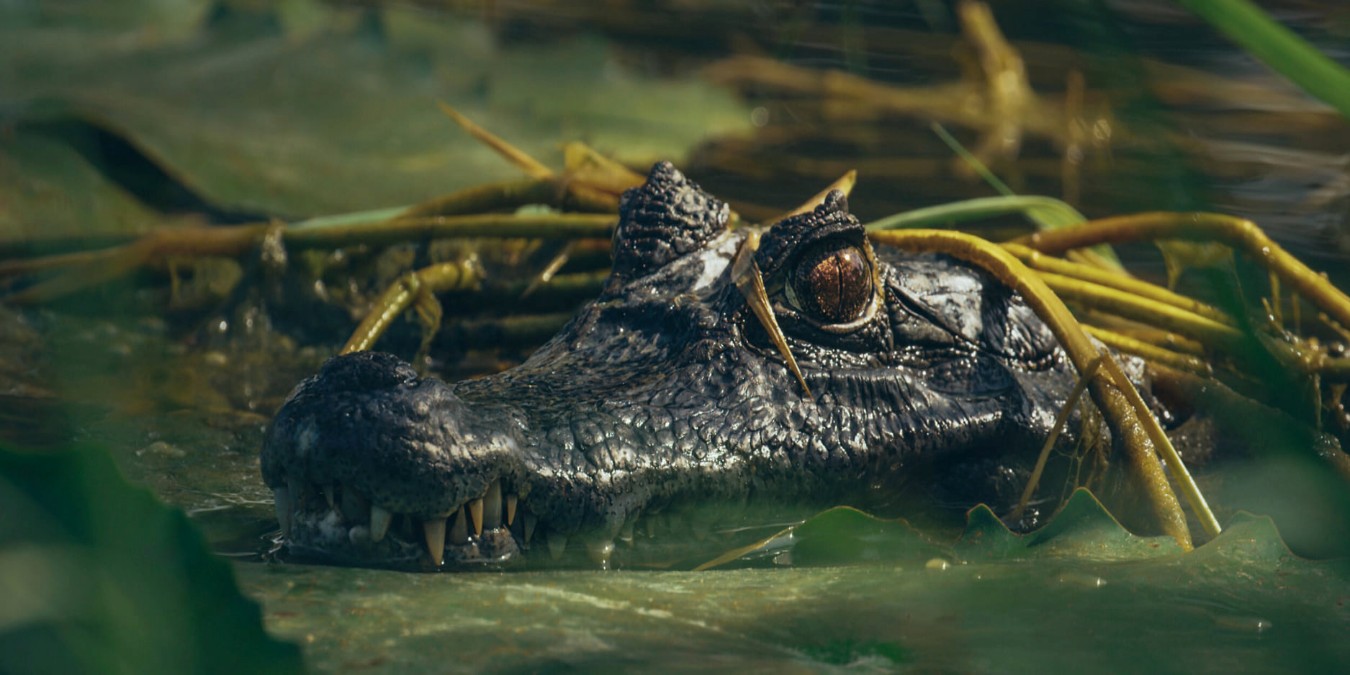Sleek, watchful, and ancient in design, the Spectacled Caiman (Caiman crocodilus) is one of Tobago’s most secretive wetland residents. Often spotted basking along riverbanks or gliding silently through still waters, this small crocodilian gets its name from the bony ridge between its eyes, giving the appearance of a pair of “spectacles.”
Caimans are believed to have reached Tobago from mainland South America centuries ago, either by natural dispersal or accidental introduction. Early naturalists once described them as widespread across Tobago’s rivers and swamps, particularly in the island’s southern wetlands. Over time, however, their range began to shrink as wetlands were drained and human activity expanded.
Despite their modest size, Tobago’s caimans have sparked scientific curiosity. Some researchers have suggested that the island’s population may represent a slightly smaller, insular form of the species, a theory that continues to invite further study. Recent genetic research, however, shows that Tobago’s caimans remain closely related to their South American relatives, though their isolation may make them more vulnerable to habitat loss and population decline.
As skilled ambush predators, caimans help keep Tobago’s freshwater ecosystems balanced, feeding on fish, crabs, and amphibians. They are mostly active at night, and while rarely seen, their quiet presence is a sign of healthy wetland life.
Once common and now seldom encountered, the Spectacled Caiman endures as a living link between Tobago and the great rivers of South America, a survivor from a time when the island’s swamps were wilder, deeper, and teeming with life.


Comments